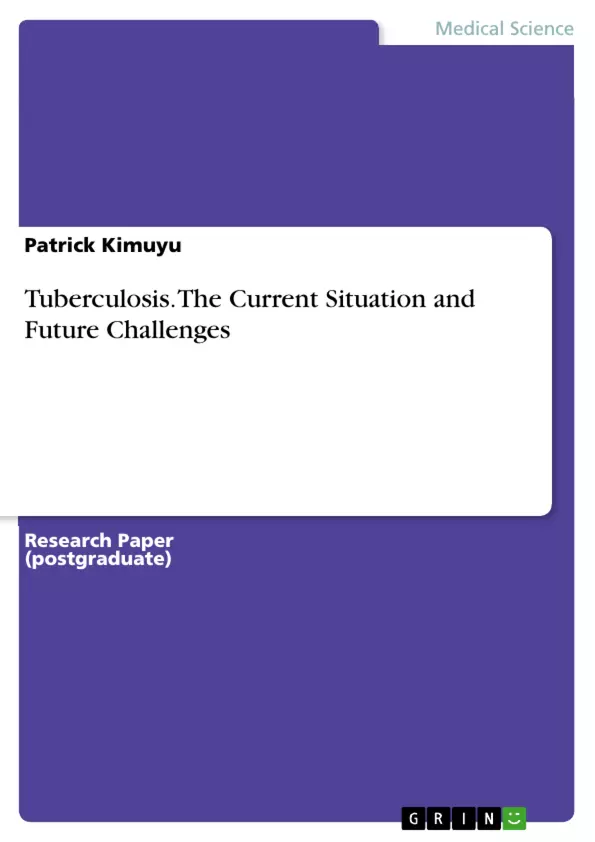Tuberculosis (TB) remains to be one of the most challenging issues in healthcare. It continues to cause a high number of deaths, globally. According to the current WHO report, TB caused 784,000 deaths in 2015, and there were 10.4 million new TB cases reported in the same year. Based on this high mortality caused by TB, it is apparent that the disease has emerged among the top ten killers worldwide.
Therefore, this case study report provides a comprehensive discussion on the key epidemiological features of TB, including causative agent, prevalence, why TB is a serious threat, diagnostic, and issues associated with its diagnosis. Additionally, the study provides current treatment, drug resistance and future recommendations.
Inhaltsverzeichnis (Table of Contents)
- Introduction
- Tuberculosis and its Causative Agent
- Current Prevalence and Severity of Tuberculosis Infections
- Why Tuberculosis is a Serious Problem
- Issues Surrounding Diagnostic Methods
- Active TB testing Algorithms
- Recommendations to Improve Diagnostics
Zielsetzung und Themenschwerpunkte (Objectives and Key Themes)
This case study report provides a comprehensive analysis of tuberculosis (TB), focusing on its epidemiological features, causative agent, prevalence, severity, diagnostic methods, and treatment challenges. The report also explores the emergence of antibiotic resistance strains and offers recommendations for improving TB diagnosis and control in the future.
- The historical and current prevalence of TB
- The impact of TB on global health and mortality rates
- The challenges associated with diagnosing and treating TB
- The emergence of drug resistance and its implications for TB control
- Recommendations for improving TB diagnosis and treatment strategies
Zusammenfassung der Kapitel (Chapter Summaries)
The introductory chapter provides an overview of the global burden of TB, highlighting its continued significance as a major public health concern. It discusses the historical context of TB and its causative agent, Mycobacterium tuberculosis, while introducing the key themes explored in the report.
The second chapter delves into the current prevalence and severity of TB infections worldwide. It examines epidemiological data, focusing on mortality rates, the emergence of drug resistance, and the impact of HIV co-infection. This chapter highlights the challenges associated with controlling TB in various regions and populations.
The third chapter explores the reasons why TB remains a serious problem globally. It discusses the limitations of current TB vaccines, the impact of social factors and healthcare infrastructure on TB control, and the challenges associated with diagnosis and treatment.
The fourth chapter examines issues surrounding diagnostic methods for TB. It explores various testing algorithms, including smear microscopy, culture, and nucleic acid amplification tests (NAATs). This chapter highlights the importance of accurate and timely diagnosis in managing TB infections and controlling the spread of the disease.
The fifth chapter delves into recommendations for improving TB diagnostics and reducing diagnostic delays. It emphasizes the importance of raising awareness among healthcare workers, utilizing up-to-date resources, and improving access to diagnostic services. This chapter concludes with a call for further research and development in TB diagnostics.
Schlüsselwörter (Keywords)
Tuberculosis, Mycobacterium tuberculosis, epidemiology, prevalence, mortality, antibiotic resistance, diagnosis, treatment, diagnostic algorithms, smear microscopy, culture, NAATs, BCG vaccine, HIV co-infection, public health, global health.
- Arbeit zitieren
- Patrick Kimuyu (Autor:in), 2017, Tuberculosis. The Current Situation and Future Challenges, München, GRIN Verlag, https://www.grin.com/document/384455



